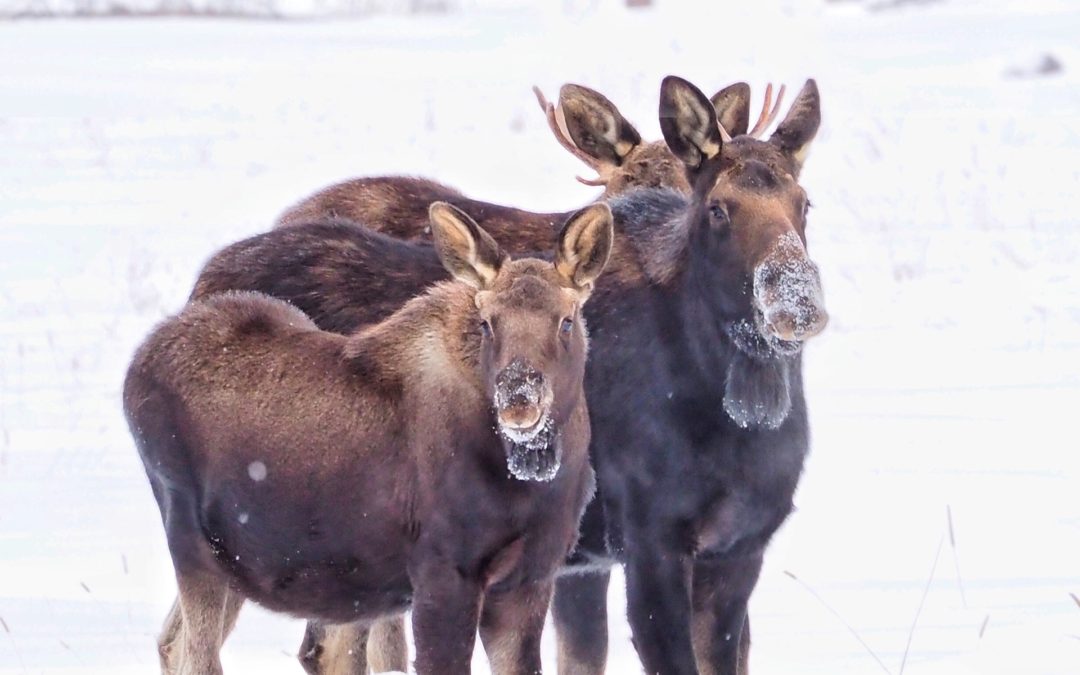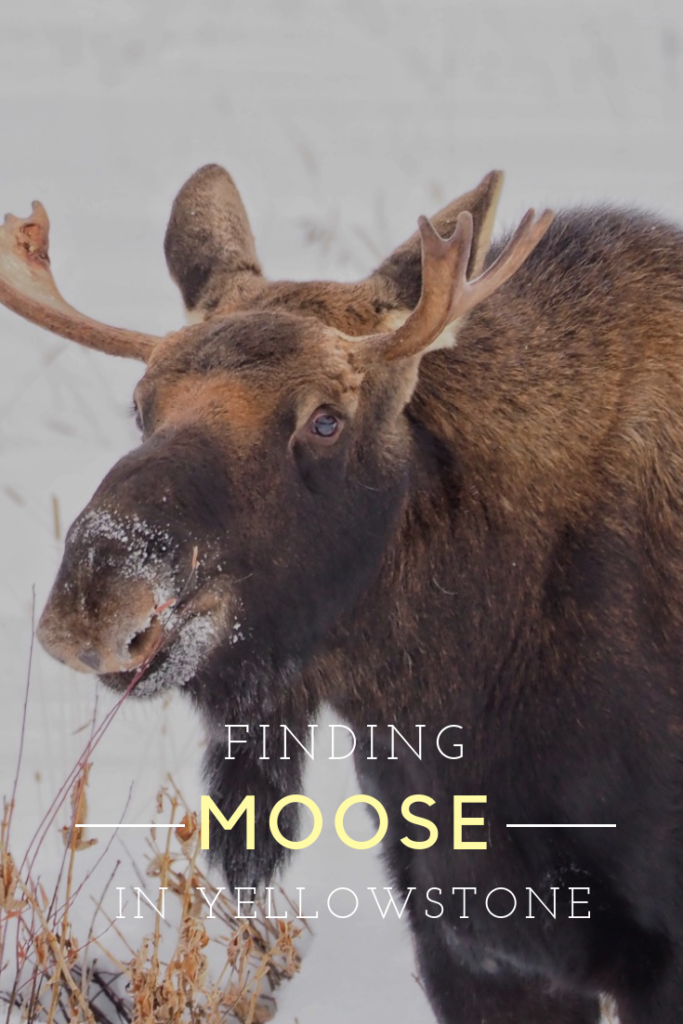There aren’t a ton of moose in Yellowstone (less than 100 on the northern range), so when we see a few gathered together it’s quite a treat. On this day, we actually saw 10 moose over the course of the morning. This video shows two young bulls (probably 1.5 to 2 years old) and a cow and calf trying to cross the road in the northeast part of the park. While moose don’t really gather in herds, and tend to be more solitary, it’s not uncommon to see them grouped together in concentrated food areas during winter. In the winter in Yellowstone, moose tend to position themselves in areas where there is dense, mature, spruce-fir forest and openings with willow; they will feed in both areas throughout the winter; subalpine fir is a staple of their winter diet. They are more spread out in the summer, when they forage on a broader variety of aquatic plants, forbs and shrubs.
We were fortunate to find a nearby pullout to video and photograph this group of moose, so as not to disturb them. As they came closer and it became clear they wanted to cross the road, we got in the truck and photographed from there. You can tell in the video where the moose got spooked away from the road by folks who had not yet gotten back in their vehicle.
Moose are surprisingly well adapted to running in deep snow, which you can see in this video. Their long legs give them quite an advantage.
Here are some tips for observing moose in Yellowstone:
In winter, the best place to look for moose is on the northern range between the confluence of the Lamar River and Soda Butte Creek and the northeast entrance. They frequent areas where there is mature spruce-fir forest as well as open meadows with willows and other shrubs. Scan the meadows and the forest edges – their dark shape will stand out against the snow, and is distinctive from bison by the humped shoulders and rumps.
In summer, moose travel to higher elevation creeks and stuff meadows and aren’t as visible as they are in winter. You can still look for them on the northern range, in the Fishing Bridge/Lake area, and towards the East entrance. In fact, some of the best places to see them are in Grand Teton National Park.
While it’s exciting to get a photo of a moose, keep your distance. Survival in Yellowstone is no easy task, and getting to close to animals raises their stress levels and can alter their movements and thus their ability to find food. Also, moose–especially cows with calves– can be unpredictable and aggressive; do not approach closer than 25 yards. If you notice they are trying to cross a roadway, get back in your vehicle and give them the space to do so.
Good luck! Drop on by our Facebook page and let us know about your moose encounters!
Photos and video: Jenny Golding


